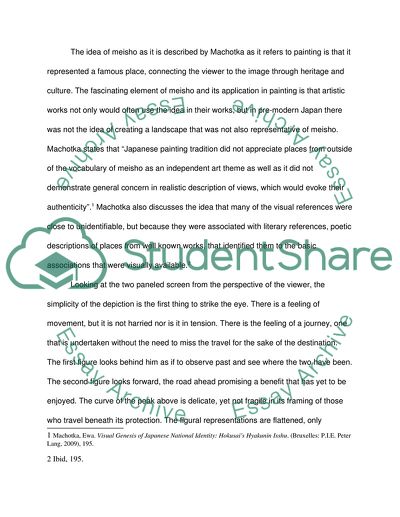Cite this document
(“Hoitsus Mount Fugi by Sakai Hoitsu Essay Example | Topics and Well Written Essays - 1500 words”, n.d.)
Retrieved from https://studentshare.org/visual-arts-film-studies/1586598-once-you-have-thought-about-bashos-oku-no-hosomichi-and-hoitsus-mount-fuji-please-write-an-essay
Retrieved from https://studentshare.org/visual-arts-film-studies/1586598-once-you-have-thought-about-bashos-oku-no-hosomichi-and-hoitsus-mount-fuji-please-write-an-essay
(Hoitsus Mount Fugi by Sakai Hoitsu Essay Example | Topics and Well Written Essays - 1500 Words)
https://studentshare.org/visual-arts-film-studies/1586598-once-you-have-thought-about-bashos-oku-no-hosomichi-and-hoitsus-mount-fuji-please-write-an-essay.
https://studentshare.org/visual-arts-film-studies/1586598-once-you-have-thought-about-bashos-oku-no-hosomichi-and-hoitsus-mount-fuji-please-write-an-essay.
“Hoitsus Mount Fugi by Sakai Hoitsu Essay Example | Topics and Well Written Essays - 1500 Words”, n.d. https://studentshare.org/visual-arts-film-studies/1586598-once-you-have-thought-about-bashos-oku-no-hosomichi-and-hoitsus-mount-fuji-please-write-an-essay.


